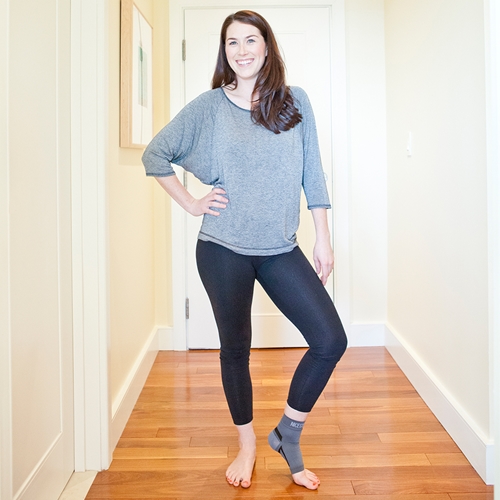
Nice Stretch products could be the answer to your plantar fasciitis pain.
Plantar fasciitis can make life difficult. There's the sharp pain when you wake up in the morning, the inability to participate in some of your favorite activities and of course the extensive search for a shoe with the right arch support. But sooner or later, with proper treatment, the condition goes away, right? The best answer is yes – with some exceptions.
Recurrence of plantar fasciitis is an all-too-common frustration. If you find yourself dealing with multiple bouts of that symptomatic heel pain, don't despair. There are steps that you can take to reduce your chance of developing the condition again in the future.
The recurrence of plantar fasciitis
If you've had plantar fasciitis in the past, you probably recognized the telltale symptoms when they began again – namely, a sharp pain near your heel on the bottom of your foot. This discomfort is caused by inflammation of the band of tissue that connects your toes to your heel bone – the plantar fascia – and is generally most severe when you stand after sitting or sleeping.
With rest and the right plantar fasciitis physical therapy exercises, the condition usually takes a few months to heal, and it generally resolves with little to no invasive measures. However, for many people, recurrence is not uncommon.
Luckily, there are steps you can take to limit the chance that your plantar fasciitis will flare up again. One of the main strategies is to avoid activities that will aggravate the condition, such as running on hard surfaces. To get your cardio in without putting your feet at risk, opt for low-impact activities such as swimming and cycling. If you can't bear to give up your daily jog, consider cutting back on the distance or intensity.
The Lehigh Valley Health Network additionally emphasized the importance of wearing the right footwear to prevent plantar fasciitis recurrence. Check out the Brownmed blog post on how to choose the best shoes for plantar fasciitis for tips on picking out your next pair.
Because obesity is a risk factor for developing plantar fasciitis, your doctor may also recommend weight loss as a preventive measure.

Plantar fasciitis treatments and tips
If you develop this painful condition again, the right daily plantar fasciitis treatment plan is key to resolve the symptoms and help you to avoid it in the future.
In addition to rest, your health care provider will also likely suggest plantar fasciitis physical therapy exercises. The American Academy of Orthopaedic Surgeons recommends stretching your plantar fascia by sitting and crossing your painful foot over your other leg. Hold onto the toes of your affected foot and carefully and slowly pull them toward your body. Hold the position for 10 seconds and then repeat the stretch about 20 times. Do the same with the other foot if it's also affected.
To get in a good stretch both during the day and at night, consider the products in Brownmed's Nice Stretch line. The Nice Stretch Total Solution Plantar Fasciitis Relief Kit comes with a sleeve for daytime use and a splint that's comfortable enough to wear all night for 24/7 pain relief.
